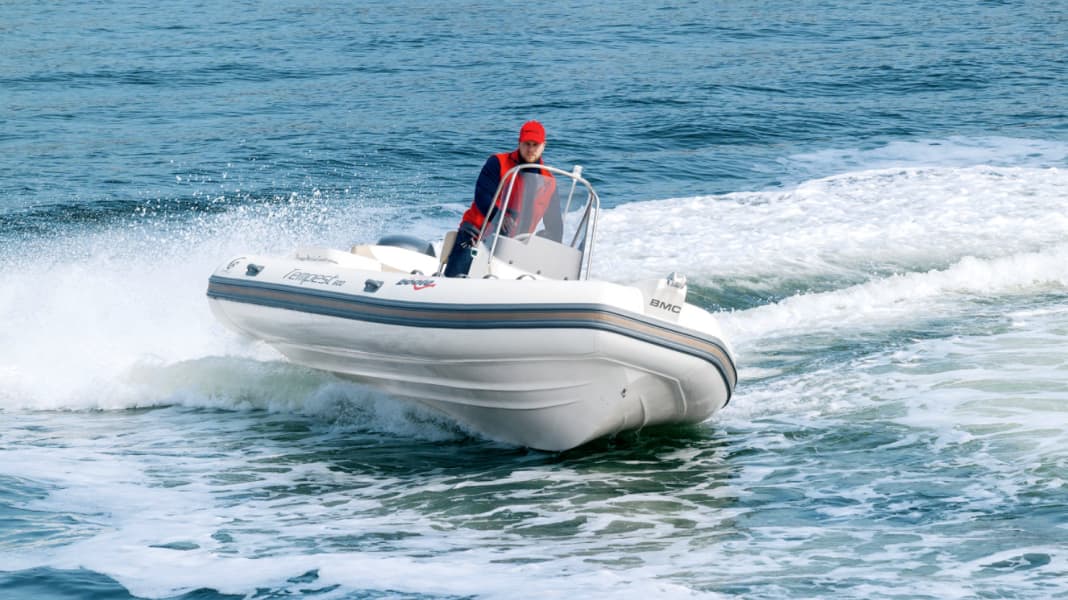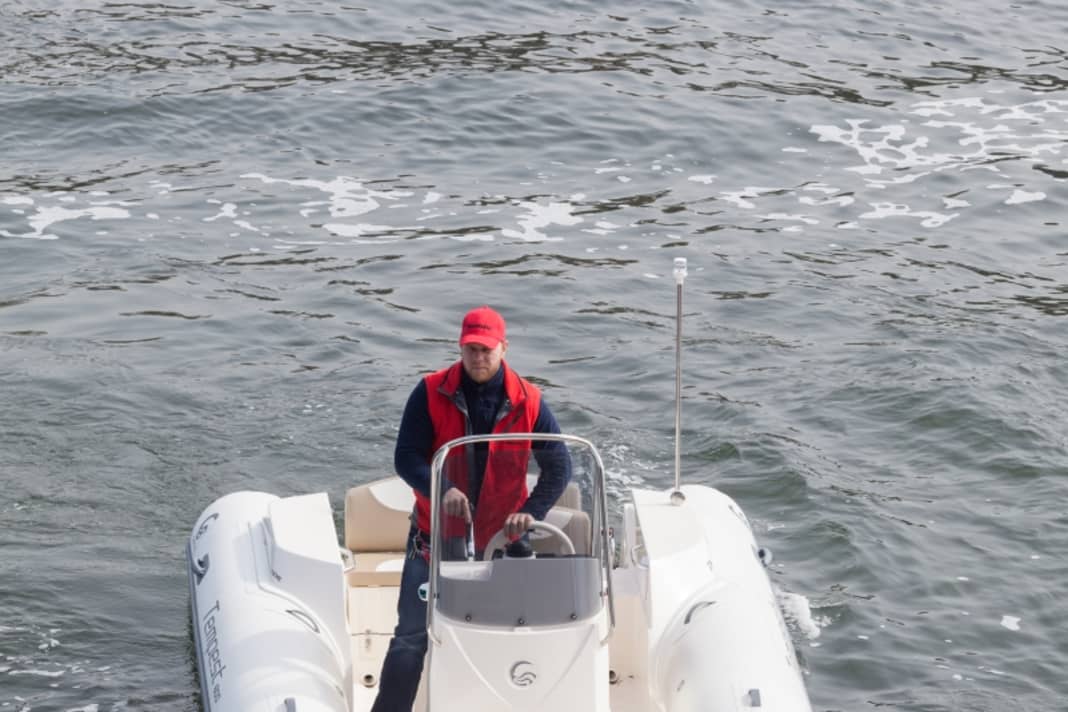
Thatthe Italian shipyard Capelli is an expert in the construction of inflatable boats and RIBs, as demonstrated by its portfolio of around 36 models in four categories. The brand's smallest boat has a length of 2.18 metres, with the top-of-the-range Tempest 44 model coming in at 13.10 metres. In terms of length, our test boat is in the lower half of the model range at 5.92 metres.
The external dimensions 5.92 m in length, 2.50 m in width with a filled carrying hose and a weight of around 1000 kg when ready to drive make transport by road a breeze. The road captain only needs a trailer with a maximum permissible gross weight of 1500 kg and a towing vehicle with a corresponding towing capacity. Golf-class vehicles already have a correspondingly high maximum towing capacity.






With the bow and stern sunbed kit, the bow becomes a sunbathing area with plenty of room for two adults.
The shipyard designed the Tempest 600 according to CE certificationfor coastal waters (Category: C) and crews of up to twelve people or a payload of 1080 kg, or 1300 kg with engine. To prevent the RIB from feeling like a crowded bus with everyone trampling on each other's feet, the crew should not be more thaneight persons include. Passengers are accommodated on the double rear bench seat, which is installed next to the rear passageway, and the U-shaped front seating area. The driver and co-driver are seated behind the centre console on the raised bench seat. The backrest can be adjusted forwards to give the skipper better back support when travelling in a standing position.
The cold foam chosen for the upholstery is very firm and the covers are well made, i.e. the seams of the covers are straight and fit perfectly. Sun-seekers will find a water ski tow bar and a stern shower with a shower head on the surcharge list.45-litre fresh water tank a bow and stern sunbed kit. With its help, the bow becomes a sunbathing area right up to the steering position, providing ample space for two adults.
The attentive reader will have noticed that this puts us 10 hp above the maximum power permitted by the shipyard.
With a few additional steps, you can also create a sleeping area in the rear. To do this, an inlay board is inserted between the rear bench and the helm seat and covered with a cushion. The backrest of the first bench can also be folded back flat. For stowing the cushions and other items that are not permanently needed, there is a stowage box underFront seating group, driving position and rear bench seat A large storage box with fittings, which can be secured with a lock, is available for each of the two storage compartments.
Our test boat is motorised with theYamaha F150. This produces 150 hp from its four cylinders with a total displacement of 2670 cc. The attentive reader will have noticed that this is 10 hp more than the maximum output permitted by the shipyard. When confronted with this, Kris Deraedt, owner of the Brugge Marine Centre, states that Capelli has granted him an exemption in this respect. The one we receivedMaximum speed is a good 46 knots.
The most economical gliding speed, which corresponds to 21 knots with this combination, is quieter, more economical and therefore takes you further.
At the same time, 1.19 l/sm of petrol runs through the fuel line to the engine.The noise level at the steering position is exactly 90 db/A at the engine's 5700 rpm prevailing in this situation. The most economical planing speed is quieter, more economical and therefore takes you further, which corresponds to 3000 rpm or 21 knots according to the rev counter for this combination of boat, engine and propeller.If you drive economicallythe 130 litre fuel tank is only empty after 155 nm except for the 15% reserve. In terms of volume, we measured 79 db/A in this range, which is a satisfactory value.
On the subject of manoeuvring The Tempest 600 also shows its best side at low speeds. The turning circles forwards with gear engaged and static speed are 1 ½ boat lengths to starboard and port respectively. Reversing from starboard to port takes four seconds. The Tempest can turn to the other side in just three seconds.The transition from displacement to gliding travel takes place between 1500 rpm and 2300 rpm.
We say "excellent" for the handling in rough water. The hull glides through waves coming from the front and the side without heeling.
The foresight is maintained the whole time without any restrictions. We determined the lowest glide speed to be 2500 rpm, but the Tempest only glides well at 3000 rpm. With theDriving characteristics we cannot find any weaknesses in the fuselage. The steering commands are transmitted directly to the engine via the hydraulic steering, which is too heavy at high speeds. To theDriving behaviour in rough water Let's say "excellent". The hull glides through waves that come from the front and the side without any cracks.
The safety standards With regard to the Tempest's bilge pump, with only one electric and no manual bilge pump, it does not fulfil the BOOTE requirements. One positive feature, however, is the fire port, which can be used to extinguish the area on board around the fuel tank with a fire extinguisher without opening a hatch. This prevents more air from being supplied to the fire. ForMovement safety The Tempest 600 has a continuous anti-slip structure that is non-slip both dry and wet.
OUR CONCLUSION
The Tempest 600 is overpowered with the Yamaha F150 according to the CE approval, but copes well with the power in terms of handling characteristics. The workmanship of the support tube is impressive. One wishes for more attention to detail in the GRP work.

